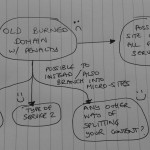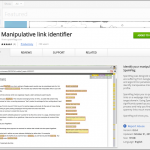You’ve been penalized with an “unnatural links” manual action, be it partial or the dreaded site-wide. You’ve read through every penalty and link removal blog post and followed the instructions meticulously. You’ve reached out to hundreds, if not thousands of webmasters to get problematic links removed, and you’ve lodged a disavow file with the balance. Your well-considered and referenced reconsideration request has been submitted and you’re feeling confident awaiting Google’s response…
Then it happens – Google responds with a declined reconsideration request, listing the classic three sample links. The only problem is, these links were never there to start with! Frustration, annoyance, confusion – you’re feeling at least one of them. How can you be expected to win the battle of penalty removal when Google feeds in new link data after you’ve submitted a reconsideration request?
The truth is we will never be able to predict Google’s responses to reconsideration requests. Having done hundreds of them at Penalty Pros, I can vouch that there is sadly great inconsistency in their responses, and feeding in post-recon link data is just one of the battles you need to fight. Fortunately there are a few proactive measures you can take.
1 – Check Your Latest Links Regularly
As you know, Google updates their “Latest Links” data after you’ve submitted your reconsideration request. What you want to do is check in on that data every 3-5 days to take note of any new links they’ve added. Another word of advice – don’t rely on the dates they show in column B – these can be inaccurate and lead you to only review those which are dated post your request. Instead, compare the two data sets (your original link data which you audited vs the “Latest Links”) in Excel and review anything that’s not duplicate. Links that are in any way questionable should be added to the disavow file immediately.
2 – Use Multiple Link Sources
This one is fairly obvious, but a lot of people rely purely on the link data provided within Google Webmaster Tools – this would be a mistake. The link data shown in Webmaster Tools is a small portion of your link profile, and it is wise to combine this with a secondary link source such as Majestic SEO or Open Site Explorer. The more link data you can get the better, but if you can only use one, Majestic SEO would be my recommendation.
Again, apply the same logic to your secondary link data sources, that is, to check them for new links every 3-5 days post recon, and update your disavow file accordingly.
3 – Disavow At a Domain Level
Wherever possible, disavow problematic links at a domain level to maximise coverage. I understand your hesitation to effectively negate any future value of a domain by disavowing at such a broad level, but you just never know whether another link may crop up from that domain that you didn’t spot previously. This is particularly true with links from WordPress blog posts – as the post paginates further back, a new URL is created (ie /page-2/, /page-3/, etc.), which creates a new unnatural link. The last thing you want is a denied reconsideration request because a blog post paginated while your request was in the queue. Rather play it safe – remember that you can edit your disavow file down the line.
Conclusion
Whilst these three tips are by no means a guarantee of reconsideration success, they will greatly improve your odds of being approved. Remember that they’re only part of the puzzle, and accurate, unbiased analysis will be key to any successful request. If a link is in any way questionable, don’t sit on the fence or give it the benefit of the doubt – remove or disavow it. Reconsideration requests are not a place for trying your luck.
Author - Derek Jansen
Would you like to contribute to the SpamFlag blog? Get in touch!







Pingback: The Devil's In The Link Data: How To Increase Your Chances Of A Succesful Reconsideration Request - Penalty Pros()